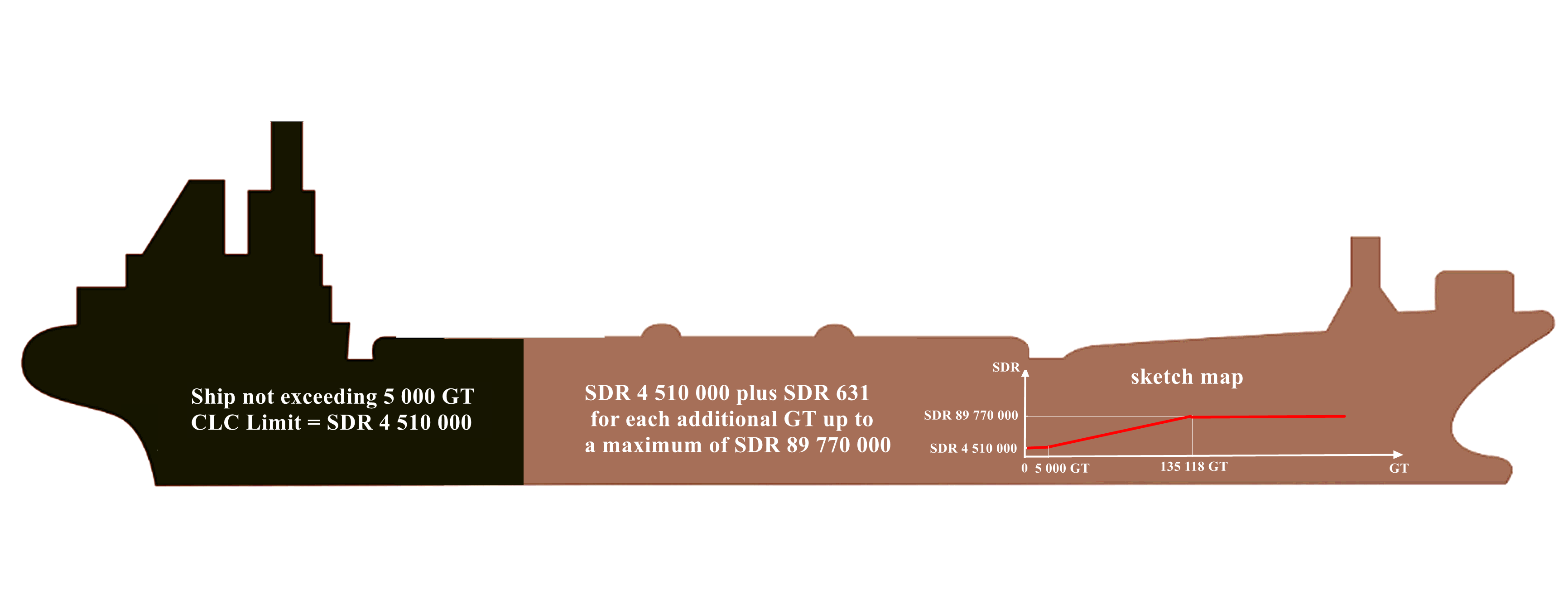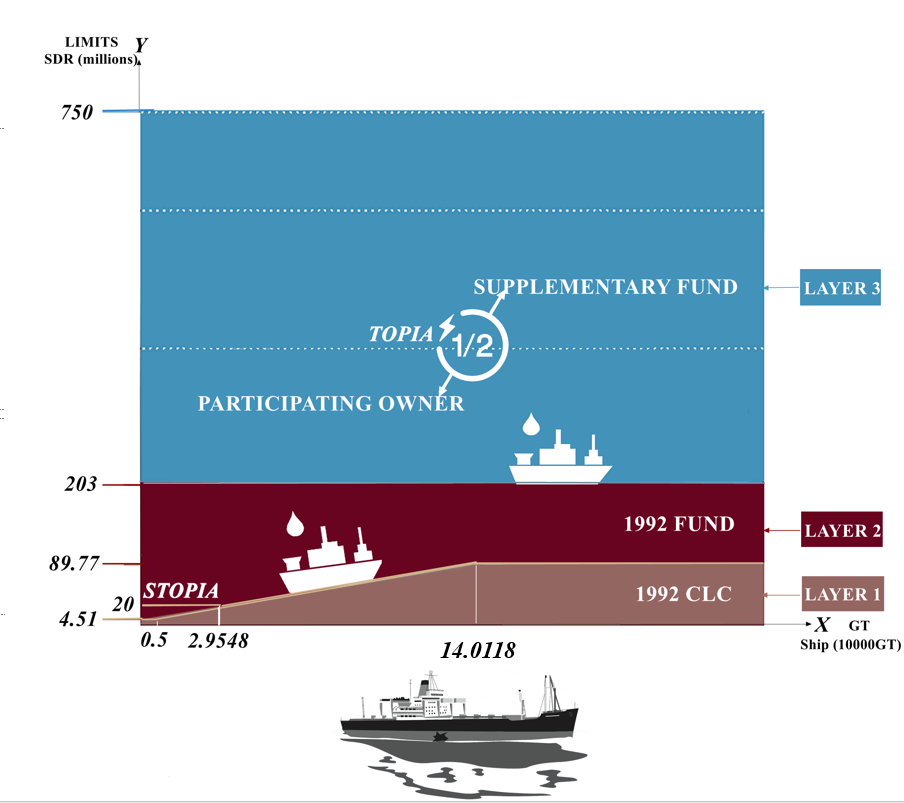LP 66/2020 The International Oil Pollution Compensation Regime: STOPIA and TOPIA
Apart from mandatory provisions in domestic laws and international conventions like the 1992 CLC and BUNKER, some non-governmental agreements are also applicable to ship pollution incidents – STOPIA/TOPIA being one example. It is normally provided in P&I Club Rules that the Member of an entered ship which is a “relevant ship” as defined in STOPIA/TOPIA shall during the currency of that agreement be a party to STOPIA/TOPIA for the period of entry of the ship. Now the question is, what exactly is STOPIA/TOPIA? This article, by explaining the content and scheme, will help understand the effective-though-rarely-used agreements and the whole oil pollution compensation regime.
I. General introduction
STOPIA, is short for Small Tanker Oil Pollution Indemnification Agreement and TOPIA for Tanker Oil Pollution Indemnification Agreement. Both were set up in 2006 and amended in 2017. The two agreements were reached by the International Group of P&I Clubs with IOPC Funds to decide the sharing of compensation for pollution damage between shipowners and cargo interests.
STOPIA/TOPIA indemnifies the 1992 Fund (the 1992 FUND Convention) and Supplementary Fund (the 2003 Protocol) for compensation paid above shipowner’s limit if liability under the 1992 CLC. The voluntary agreement for equitable sharing of liabilities and compensations will subtly balance the relationship between shipowners and cargo interests.
II. Content of STOPIA/TOPIA
As many as 12 provisions including “Definition”, “General”, “The STOPIA Scheme”, “Indemnification of the 1992 FUND”, “Recourse against third parties” and “Procedure and miscellaneous” were incorporated in the STOPIA.
Specifically, Clause II (B) provides that the owner of any Relevant Ship shall be eligible to become a Party and shall do so when made a Party by the Club insuring that ship as the Rules of that Club may provide.
Clause III (B) provides that a Relevant Ship shall be: (1) of not more than 29,548 Tons; (2) insured by a Club; and (3) reinsured through the Pooling arrangements of the International Group. Such a ship shall be eligible for entry in the scheme.
More importantly, Clause IV (A) provides where an entered ship causes pollution damage as a result of an incident and the 1992 Fund has paid or expects to pay compensation under the 1992 Fund Convention, the said owner shall indemnify the 1992 Fund in an amount calculated in accordance with the clause. And in Clause IV (C), indemnification shall not exceed in respect of any one incident an amount of 20 million SDR less the amount of the owner’s liability under the CLC Convention.
That is to say, in the event of an oil pollution incident caused by a small tanker of less than 29,548 GT and subject to the application of the 1992 CLC, the owner or its insurer shall compensate the victims with an amount not exceeding the limit of liability if the pollution takes place in the waters of a Contracting Party to the FUND Convention and the rest was supposed to be paid by the 1992 Fund. Now with the STOPIA agreement, the owner shall compensate the 1992 Fund and the maximum amount of compensation payable is increased to 20 million SDR. The incidents involving a vessel entered in STOPIA include the Solar 1 spill, which occurred in the Philippines in 2006 and the Trident Star spill, which occurred in Malaysia in 2014.
TOPIA was made in a structure similar to that of the STOPIA.
Clause III (B) provides that a Relevant Ship shall be: (1) insured by a Club; and (2) reinsured through the Pooling arrangements of the International Group. Such a ship shall be eligible for entry in the scheme.
Clause IV (A) provides where an entered ship causes pollution damage as a result of an incident and the Supplementary Fund has paid or expects to pay compensation under the Protocol, the said owner shall indemnify the Supplementary Fund in an amount calculated in accordance with the clause. (B) Indemnification shall not be payable for: (1) the costs of any Preventive Measures to the extent that the owner is exonerated from liability under Article III, paragraph 3 of the CLC Convention, and for which the Supplementary Fund is liable by virtue of the Protocol; (2) any other pollution damage to the extent that liability is incurred by the Supplementary Fund but not by the owner. (C) The amount for which Indemnification is payable by the owner to the Supplementary Fund shall be 50% of the amount of compensation which the Supplementary Fund has paid or expects to pay for Pollution Damage caused by the Incident.
Consequently, TOPIA applies to Contracting Parties to the 2003 Protocol as owners of relevant tankers, regardless of size, are to indemnify the Supplementary Fund in respect of half of the amount of any claim falling on the Fund. Given the interdependence of the compensation regime, the country suffering affect of oil pollution damage shall accede to the 1992 CLC, the 1992 Fund and the 2003 Protocol simultaneously. To date, there has been no TOPIA case yet.
III. The compensation regime for oil pollution damages
To better understand the role STOPIA/TOPIA plays in the international oil pollution compensation regime, the three-tier structure need to be explained first.
The first tier: the 1992 Liability Convention
The 1992 CLC applies to pollution damage caused by tankers carrying persistent mineral oil either as cargo or bunker in the territory of a Contracting State. The owner is entitled to a limit of liability under the Convention and shall constitute a fund for the total sum representing the limit of liability. For any one incident, the owner may limit his liability to an aggregate amount of 4.51 million SDR for a ship not exceeding 5,000 GT, and for a ship with a tonnage in excess thereof, for each additional unit of tonnage, 631 SDR shall be added in addition to the aggregate amount. However, this aggregate amount shall not in any event exceed 89.77 million SDR. Therefore, it can be deducted that owner of a ship with 140,118 GT or more will reach the limit of 89.77 million SDR.

The second tier: the 1992 FUND
The 1992 Fund Convention also applies to the pollution damage under the 1992 CLC and accordingly, the 1992 Fund was set up under the convention by cargo contributors to provide adequate compensations. The Fund pays when the damage exceeds the limit of the owner’s liability under the 1992 CLC, but the maximum amount payable is 203 million SDR. The IOPC Funds is now in charge of management of the fund and claim handling of oil pollution incidents.
The third tier: the Supplementary Fund
Despite the compensation provided under the 1992 CLC and the 1992 FUND, victims to some major oil pollution incidents are not always adequately supported – a proved fact especially after the Erika heavy oil spill. The 2003 Protocol was adopted by an IMO diplomatic conference and entered into force in 2005, thereby establishing a Supplementary Fund where participation means more liabilities and higher payments for oil cargo interests. The total amount of compensation payable for any one incident is limited to a combined total of 750 million SDR including the amount of compensation paid under the existing CLC/Fund Convention.
According to the IOPC Fund, there has been no pollution incident applying the Supplementary Fund as of 1 January 2020. The devastating Prestige oil spill happened in Spain in 2002, prior to the adoption of the 2003 Protocol and the Supplementary Fund was therefore not applicable (Spain is a Contracting State now). Victims to the Hebei Spirit oil spill in 2007 did not benefit from the third tier of compensation either as South Korea was only a member of the 1992 Fund rather than the Supplementary Fund (South Korea acceded the 2003 Protocol in 2010).
The role of STOPIA/TOPIA
The diagram below illustrates how the regime works.

In STOPIA cases, the limit of owner’s liability has been built up from 4.51 million SDR under the 1992 CLC to 20 million SDR but applies to tankers of 29,548 GT or less. In TOPIA cases, owners undertake not only the CLC limit of liability but also indemnification to the Supplementary Fund in respect of 50% of the amount paid. To give an example, for a serious oil pollution incident in the territory of a Contracting State of the 1992 CLC, the 1992 Fund and the 2003 Protocol, STOPIA and TOPIA might be applicable at the same time. Owners of relevant tankers of 29,548 GT or less are entitled to a 20 million SDR limit of liability, 183 million SDR will be payable by the 1992 Fund (203 million minus the 20 million limit) and any additional amount will be shared equally by the owner and the Supplementary Fund.
IV. Application of STOPIA/TOPIA for incidents in Chinese waters
China is a Contracting State to the 1992 Liability Convention only, not to the 1992 FUND or the 2003 Protocol (the Hong Kong SAR being a member state of the 1992 FUND). Therefore, STOPIA might be applicable in the event of an oil pollution incident only in Hong Kong. For incidents in other part of Chinese territorial sea, the second and third tier of compensation will not be payable by the IOPC Fund and the simultaneous application of STOPIA and TOPIA is no longer an option.
V. Conclusion
Oil pollution damage is like the sword of Damocles dangling above littoral states and the consequence can be catastrophic once it falls – the tragic spill recently happened in Mauritius ringing a bell. While we get to know the international compensation regime and bearing in mind the importance of navigation safety, let us hope that there will not be an incident so serious that STOPIA or TOPIA is applicable.
For more information regarding STOPIA/TOPIA, the 1992 CLC, the 1992 FUND or the 2003 Protocol, please contact your manager at the Club.
